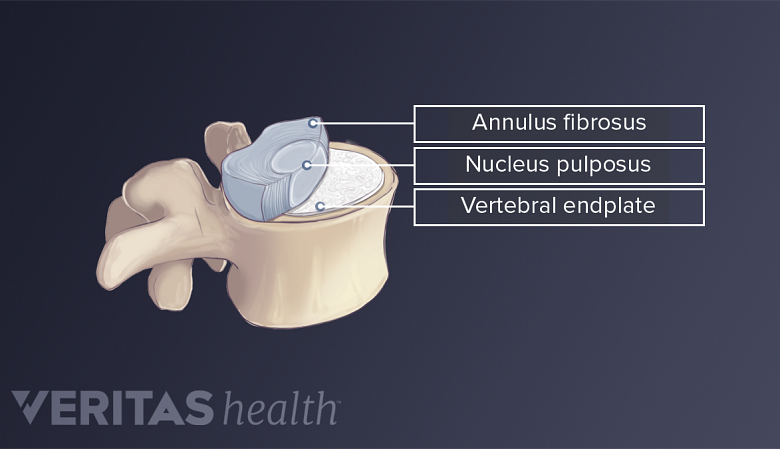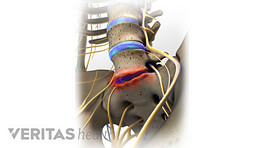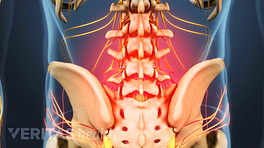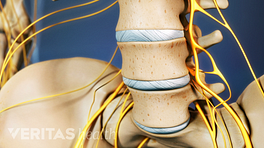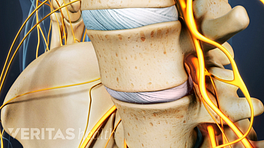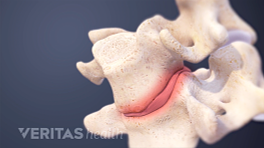Degenerative disc disease in the lumbar spine, or lower back, refers to a syndrome in which age-related wear and tear on a spinal disc causes low back pain.
Intervertebral discs are tough, fibrous structures that act as ligaments between vertebrae, absorbing pressure and providing cushioning for the spinal column. Discs are flexible yet sturdy enough to facilitate movement such as bending forward, backward, and side to side.
Watch: Lumbar Spine Anatomy Video
Despite what the name suggests, degenerative disc disease is neither considered a true disease nor does it progressively worsen with time. Discs naturally stiffen with use and age, and everyone experiences some disc degeneration. Degenerative disc disease refers only to the condition of painful disc degeneration, and it is not uncommon for symptoms to alleviate as the spine gradually stabilizes.
In This Article:
- Lumbar Degenerative Disc Disease (DDD)
- Lumbar Degenerative Disc Disease Symptoms
- Causes and Risk Factors of Lumbar Degenerative Disc Disease
- Diagnosing Lumbar Degenerative Disc Disease
- Lumbar Degenerative Disc Disease Treatment
- Surgery for Lumbar Degenerative Disc Disease
- Lumbar Degenerative Disc Disease Video
Makeup of Intervertebral Discs
A spinal disc is made of 2 layers: annulus fibrosis and nucleus pulposus.
An intervertebral disc consists of three main parts:
- Annulus fibrosis. The disc’s exterior is made up of concentric rings of collagen that twist and bend as the spine moves.
- Nucleus pulposus. The disc’s interior is a gel-like mixture of water and proteins that provides cushioning between vertebral bodies.
- Cartilaginous endplates. Between the disc and each vertebral body is an endplate made of cartilage that connects the disc to the vertebrae and acts as a gatekeeper, controlling the flow of oxygen and nutrients into the disc space.
Nerve roots and blood vessels only penetrate the outermost area of spinal discs, meaning discs have little restorative ability and innervation. Discs receive nutrition mostly from the diffusion of blood cells through the endplates.
A degenerated disc is marked by a significant decrease in hydration, making the disc inflexible, smaller, and more prone to tearing in the exterior. When one disc degenerates, it can alter the structure and mechanics of the lumbar spine, particularly at the segment surrounding the disc.

